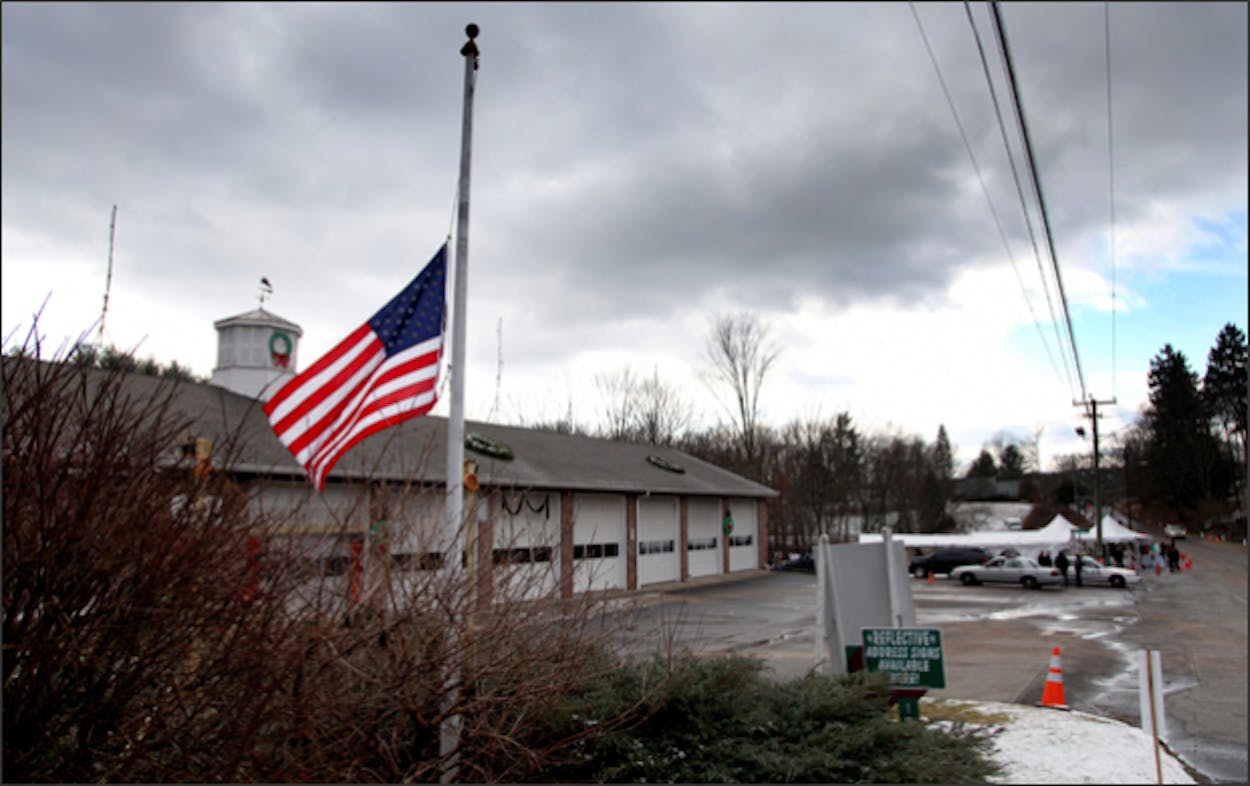In the wake of the school shooting in Newtown, Connecticut, that left 27 people dead, lawmakers around the country are scrambling for ways to prevent gun violence in American schools. So too in Texas: whether it’s arming teachers or putting a cop outside of every classroom, Texas politicians have offered several ideas about how to keep schoolchildren safe.
On January 22, three state legislators—Senator John Whitmire, Senator Tommy Williams, and Representative Dan Huberty—announced that they would file a bill on the subject. The “Texas School Districts Security Act,” they explain, would give school districts and local communities greater control over the safety of their students, by allowing them to raise extra taxes to pursue the security measures they prefer. The TSDS Act would allow independent school districts to create a dedicated property tax or use local sales tax revenue to fund additional school security, wrote Noelle Newton for KTBC-Fox. The proposal would provide communities the means to hire police officers or security guards to patrol school grounds.
The first goal, in other words, is to allow school districts to generate more funding; additional security measures, after all, require additional revenue. Williams, a Republican from The Woodlands, acknowledged as much, as KVUE reported. “We know that the added protection of our kids and school won’t come without additional costs to school districts,” Williams said, “and it’s important that we let local districts decide what is the best policy for them while keeping those districts accountable to their local citizens and taxpayers.”
The plan will be controversial, especially in light of recent events. In an unsettling coincidence, on January 22—the same day that the trio announced plans to file the bill—three people were wounded in a shootout between two individuals at Lone Star College in Harris County. That situation involved adults, of course, and reports soon surfaced that the shootings were the result of an argument, rather than the act of one deranged individual intent on inflicting as much damage as possible. Tellingly, however, Americans have heard of enough school shootings that bystanders now assume the worst. Amanda Vasquez, a freshman at Lone Star College described her reaction to hearing gunshots to CNN: “I called my mom as soon as I could just because you never know,” she said. “I didn’t know if this was going to be the last time I was going to be able to speak with her. So I just wanted to make sure she knew that I loved her.”
For some, such shootings are further evidence of why guns should be allowed on school grounds, or even encouraged. The Harrold Independent School District, in north Texas, turned to its teachers for protection after the April 2007 mass shooting at Virginia Tech; under its “Guardian Plan,” which has been in effect since 2008, teachers with concealed handgun permits are allowed to carry guns into the classroom. Harrold ISD superintendent David Thweat said that no teacher has had to use a gun, in part because would-be assailants know they would face armed resistance, according to News92-FM. And last week Brian Birdwell, a Republican senator from Granbury, filed a bill that would give people the right to carry a concealed handgun on the campuses of Texas public colleges and universities, although a similar bill failed in 2011.
On the other hand, these school shootings show that armed security guards are not a panacea for the gun problem. Lone Star College, to take that example, has its own police force, as do many college campuses—including Virginia Tech. Critics of the campus-carry legislation maintain that adding more guns to the picture could backfire tragically. Bill Powers, president of University of Texas at Austin, spoke out against giving college students the right to carry guns to class. He said, “Friday night comes on our campus once a week. Mixing youth, handguns and partying is, in my view, a mix for serious concerns about safety on campus.”
The issue is even more fraught on elementary and high school campuses, given the youth of the students there. A recent study conducted by a Harvard researcher found that American children between the ages of five and 14 are 13 times more likely to be killed by guns than children in other Western nations. School districts throughout Texas have taken varied approaches in response to the shooting at Sandy Hook Elementary in Newtown. The Austin Police Department increased patrols at Austin ISD elementary schools, wrote Jessica Vess for KVUE News. All Austin-area high schools have dedicated security officers, but there are none at its elementary schools. Navarro ISD has an armed deputy at every school, but officials estimate that these guards will cost $50,000 a year.
The new TSDS plan, in other words, might be seen as an effort to financially allow the school districts to preserve that variation. It’s different, after all, from some of the other ideas that have been floated, such as Lieutenant Governor David Dewhurst’s suggestion that the state should fund firearms training for teachers. And for that reason, it’s already attracted some support from unexpected quarters. Linda Bridges, president of the Texas chapter of the American Federation of Teachers endorsed the TSDS Act as a preferable plan to arming teachers. “Teachers, their role is to teach and law enforcement are the individuals are the ones who should be licensed to handle security on campuses,” she told KTBC-Fox.
- More About:
- Politics & Policy






